Kaisha’s pairing set playfully mixes Sicilian and Chinese cuisines – This is Shanghai
If you travel and drop in Shanghai, you’ll land at a wine or cocktail pairing dinner. Everyone jumped on the set menu bandwagon.
That said, anyone with a bit of restaurant experience can combine a few nattys or Old World wines with equally frilly dishes and call it a pairing menu.
Add to a range of cocktails emblazoned with all the right buzzwords – infused This and clarified that – and you’ll get WeChat tracking within minutes.
Image by Sophie Steiner/It’s
However, that’s not necessarily how it works. Like a successful fusion – that word everyone became obsessed with in the 90s and just as quickly fell out of favor in the 20s – the ingredients must complement each other in some way, or create a contrast that works to enhance the experience of each component, making the whole better than the sum of its parts.
It doesn’t necessarily happen all the time.
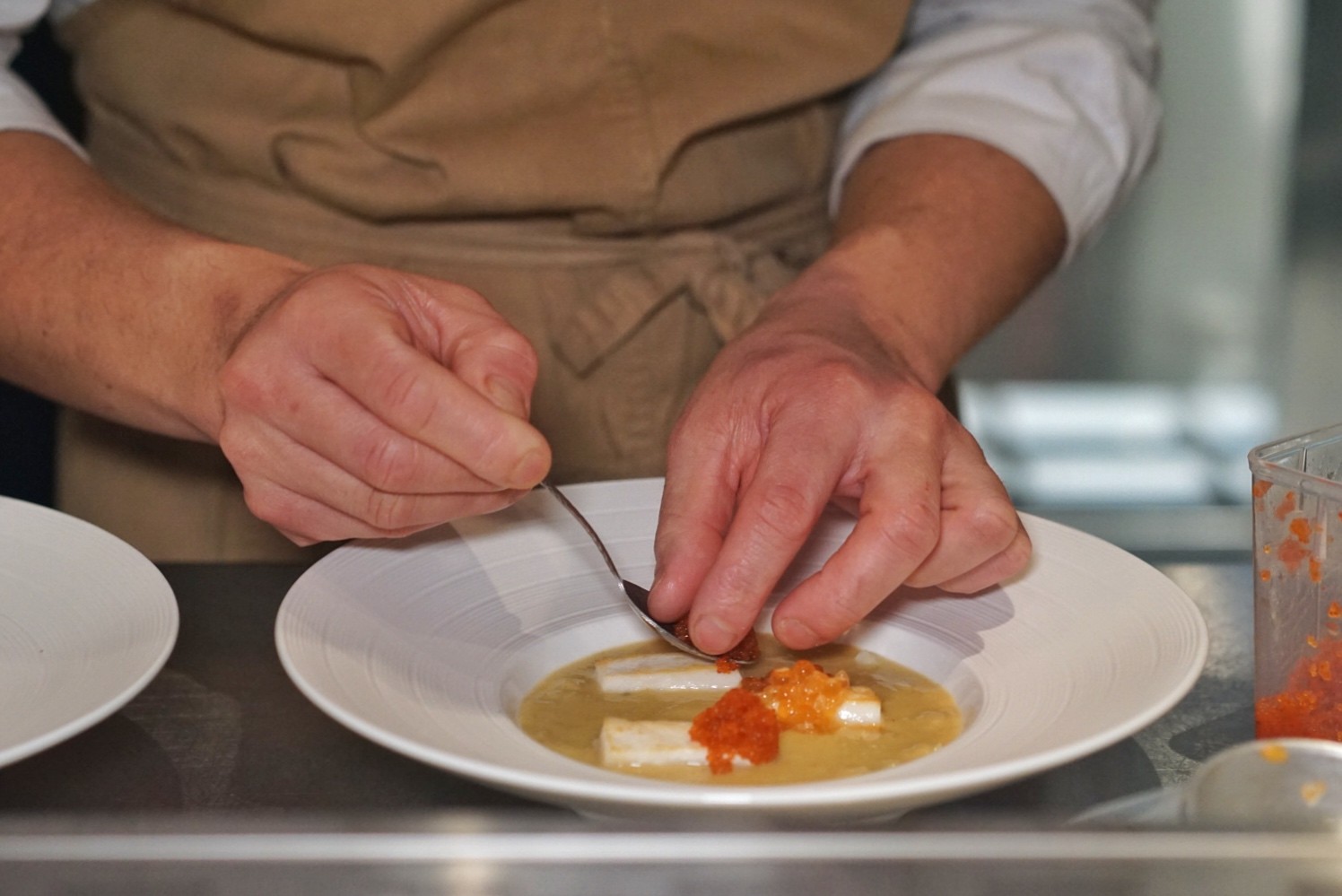
Image by Sophie Steiner/It’s
In fact, in many restaurants, a pairing menu will simply bundle overly daring ingredients with hard-hitting bevvies so that by the third course, your palate is slaughtered and you can’t really taste anything.
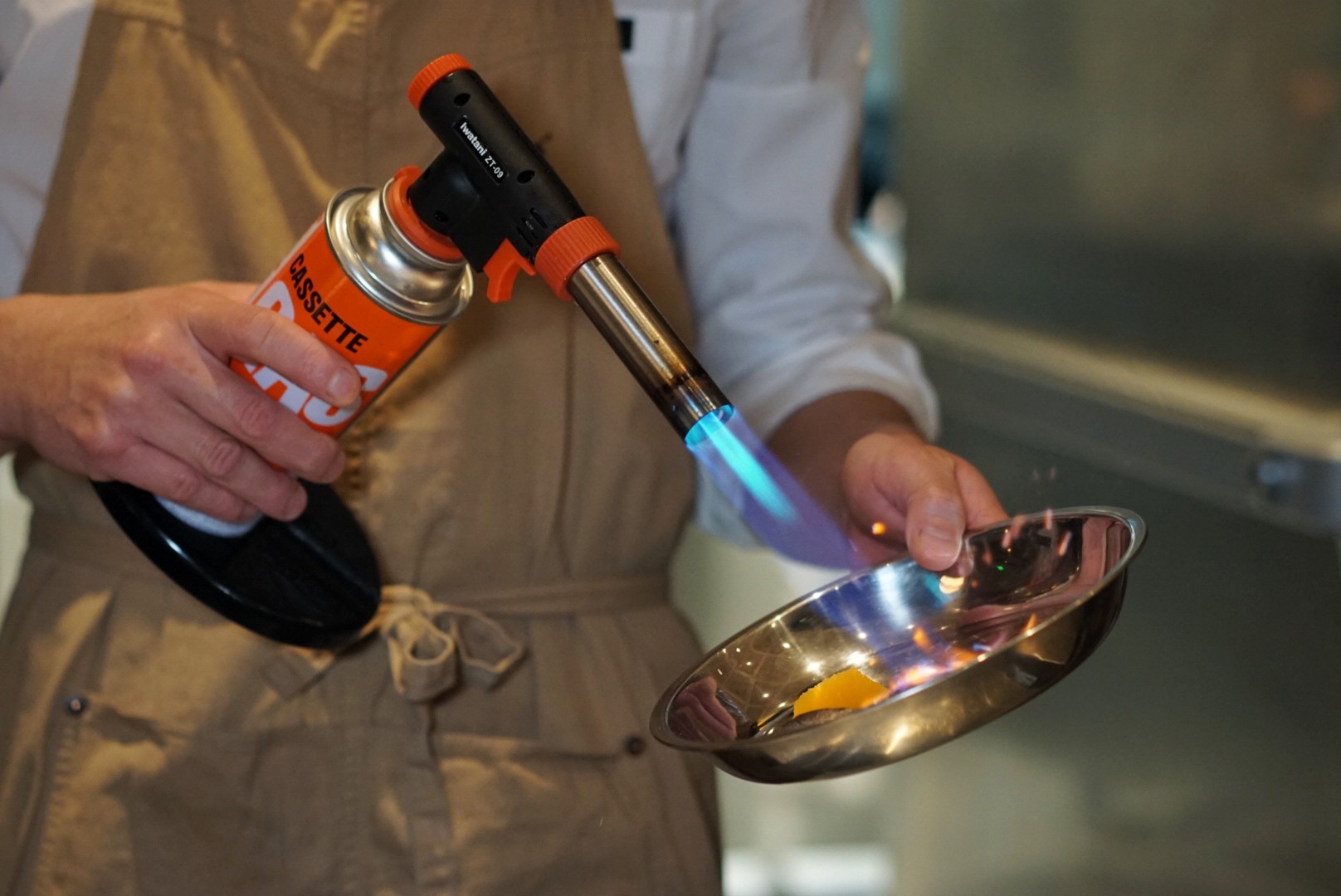
Image by Sophie Steiner/It’s
Kaisha turns out to be an exception, with chords reflected in their 8-course menu and 8 cocktails (680 RMB/food, 300 RMB/cocktails), a series of dishes paired with libations that change every few weeks. Each dish is assembled before the eyes of the guests for a tailor-made sensory experience.
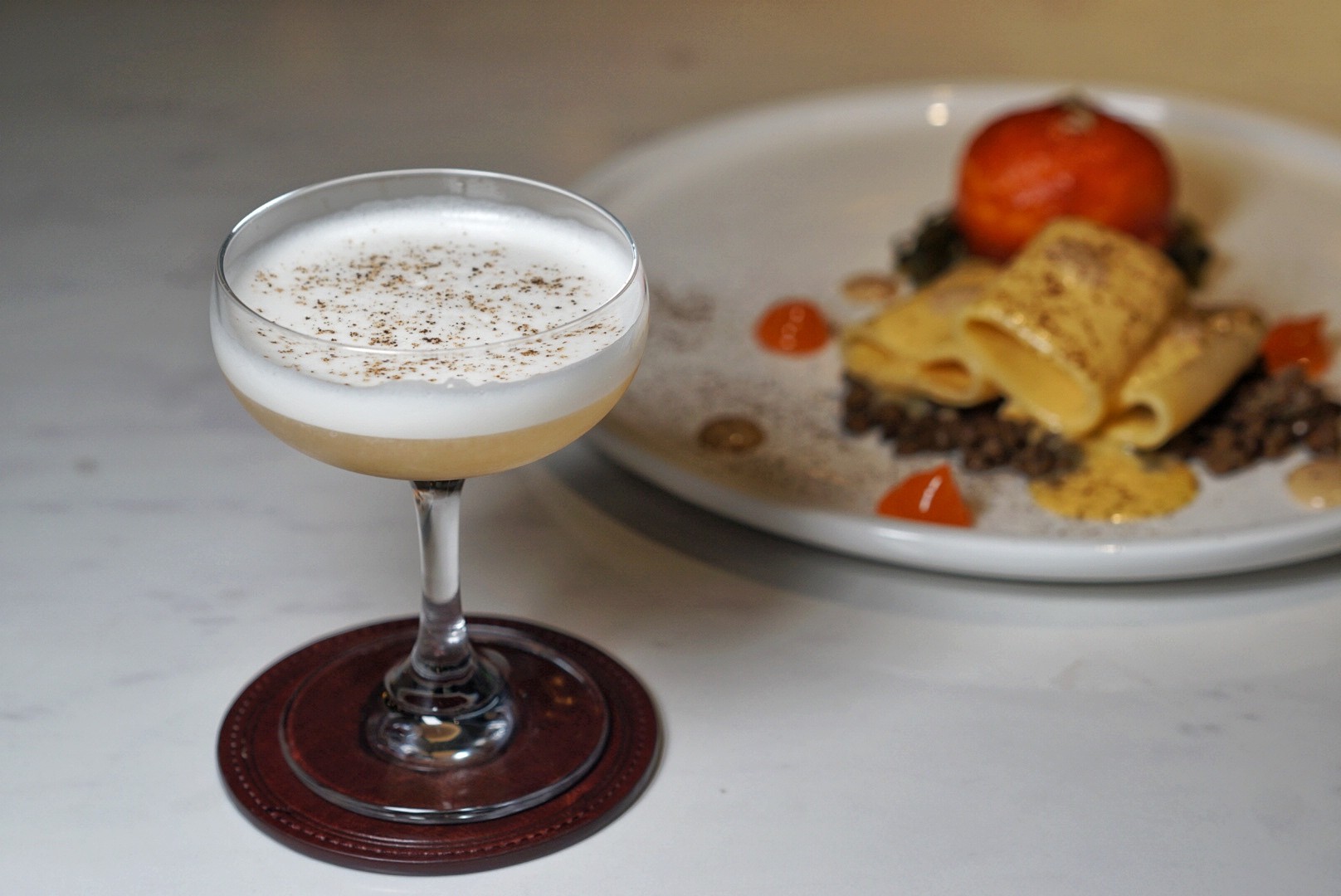
Image by Sophie Steiner/It’s
Drawing on his experience working on the Italian island, Chef Shunojo applies all Chinese ingredients to recreate signature Sicilian dishes, focusing entirely on the seasonality of ingredients.
Tomo Shinoda and Naoki Toyodome, the team behind Kaisha’s cocktails, then prepare free sips, repeating the process almost weekly to use only the freshest materials.
“Wine pairings can be exceptional for balancing a dish, but with cocktails, you can control all the elements – flavor, aroma, temperature, mouthfeel – to create an inimitable experience for guests,” says Shunojo.
This is the kind of culinary journey you can expect…
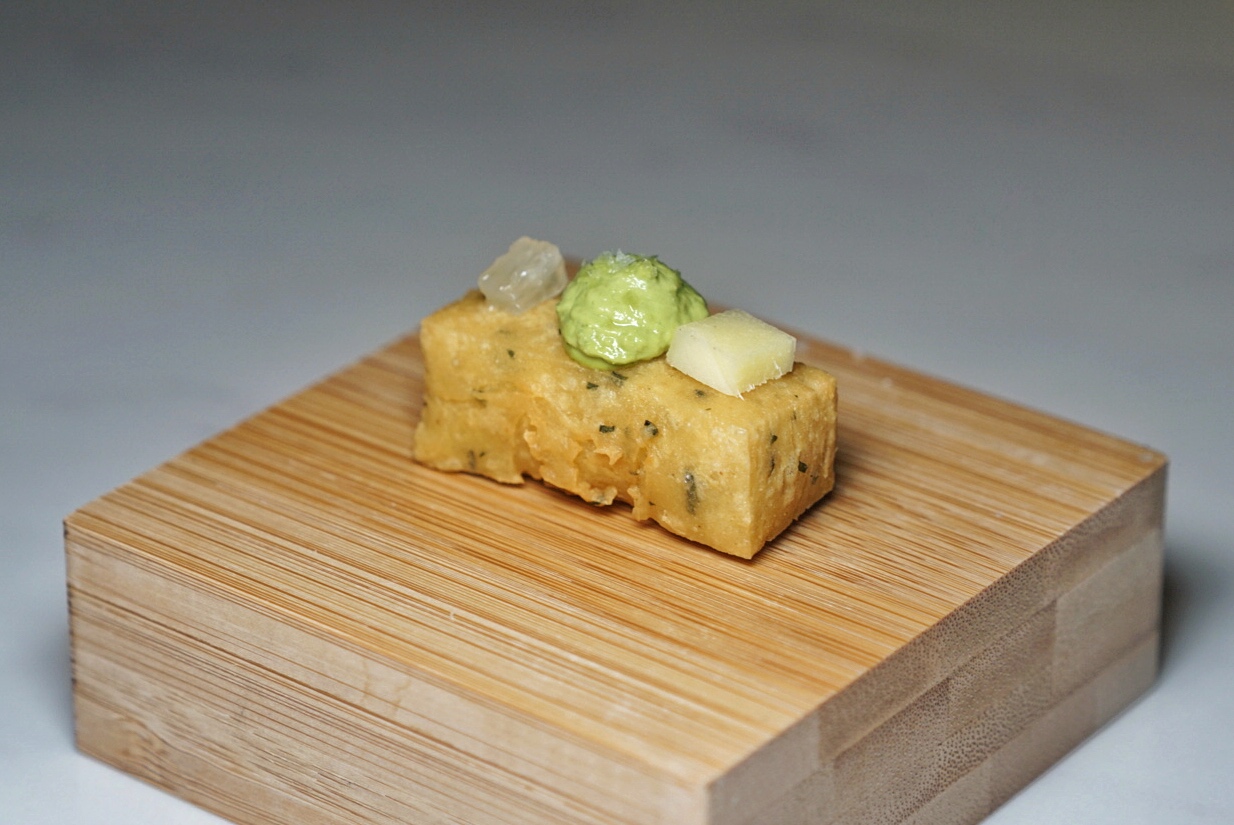
Image by Sophie Steiner/It’s
An amuse-bouche, Panel is a Sicilian street snack, usually snacked while drinking. A chickpea fritter is crispy on the outside, gooey on the inside, and topped with Italian parsley, lemon, and — for a touch of Chinese palette — ginger.
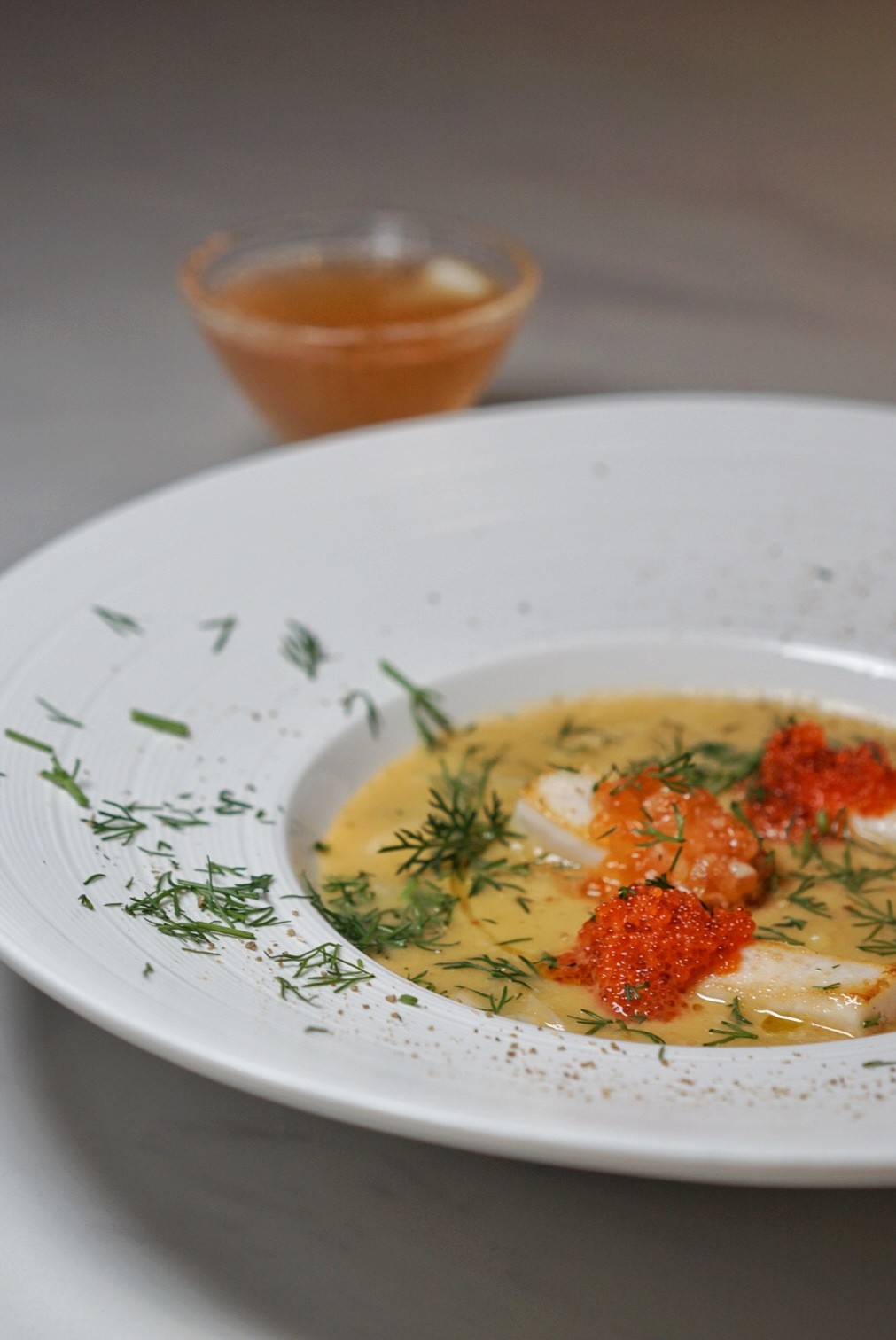
Image by Sophie Steiner/It’s
Porridge made from fennel bulbs Sicilian sees slices of swordfish crowned with Ikura salmon roe and tobiko (flying fish roe), garnished with fennel leaves and seeds.
An umami-rich soup bomb rich in salt, it is sweetened by the tangy combination of heat Sicily cocktail, based on Marsala wine, Aperol and lemon.

Image by Sophie Steiner/It’s
Named after the Italian dessert version of Chinese almond tofu, the Mangiare White is a tasty alternative, enhanced with sliced scallops. Black olives appear as cocoa nibs, while green olives replace pistachios, accented with grated almonds and orange.
A drizzle of homemade chili oil brings a spicy touch balanced by the Douhua 2.0, an almond milk and amaretto drink, blended with anisette and a touch of freshly ground wasabi of the day.
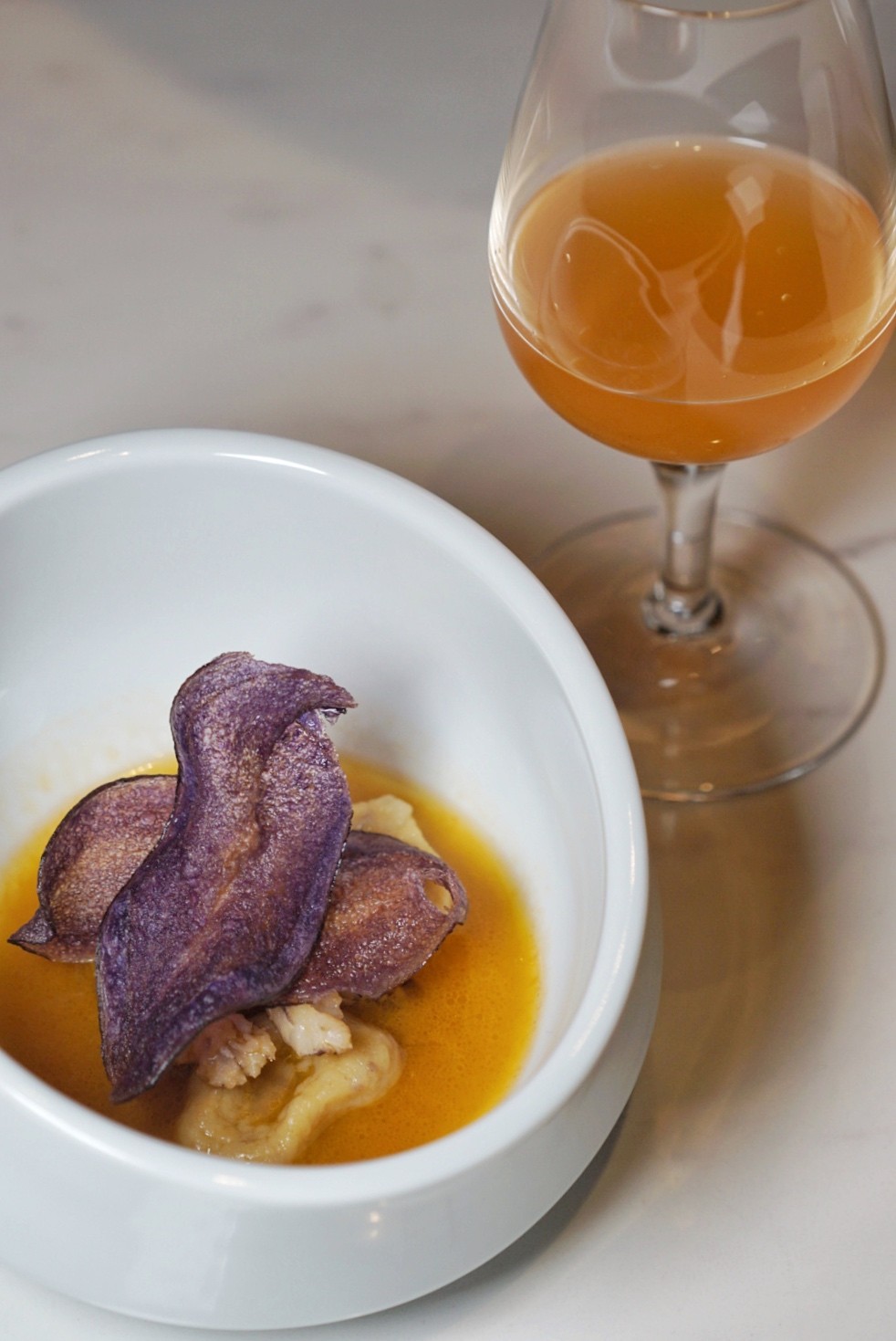
Image by Sophie Steiner/It’s
Our favorite pairing begins with what can only be described as a Thai Bloody Mary, known as Oriental Sour, made with shochu, Thai red curry paste, coconut, lemon, and habanero-based liqueur from Danish brand Empirical Spirits Fuck Trump and His Stupid Fucking Wall.
(Yes, that’s really the name).
The nose is spicy, but the flavor leans sour, enhancing the Cicala di Mare’s subtle broth. Loaded with delicate mantis shrimp and water chestnut gnocchi, the broth is topped with purple potato crisps, a crunch that mimics the sound of the shrimp’s shell when you eat it.
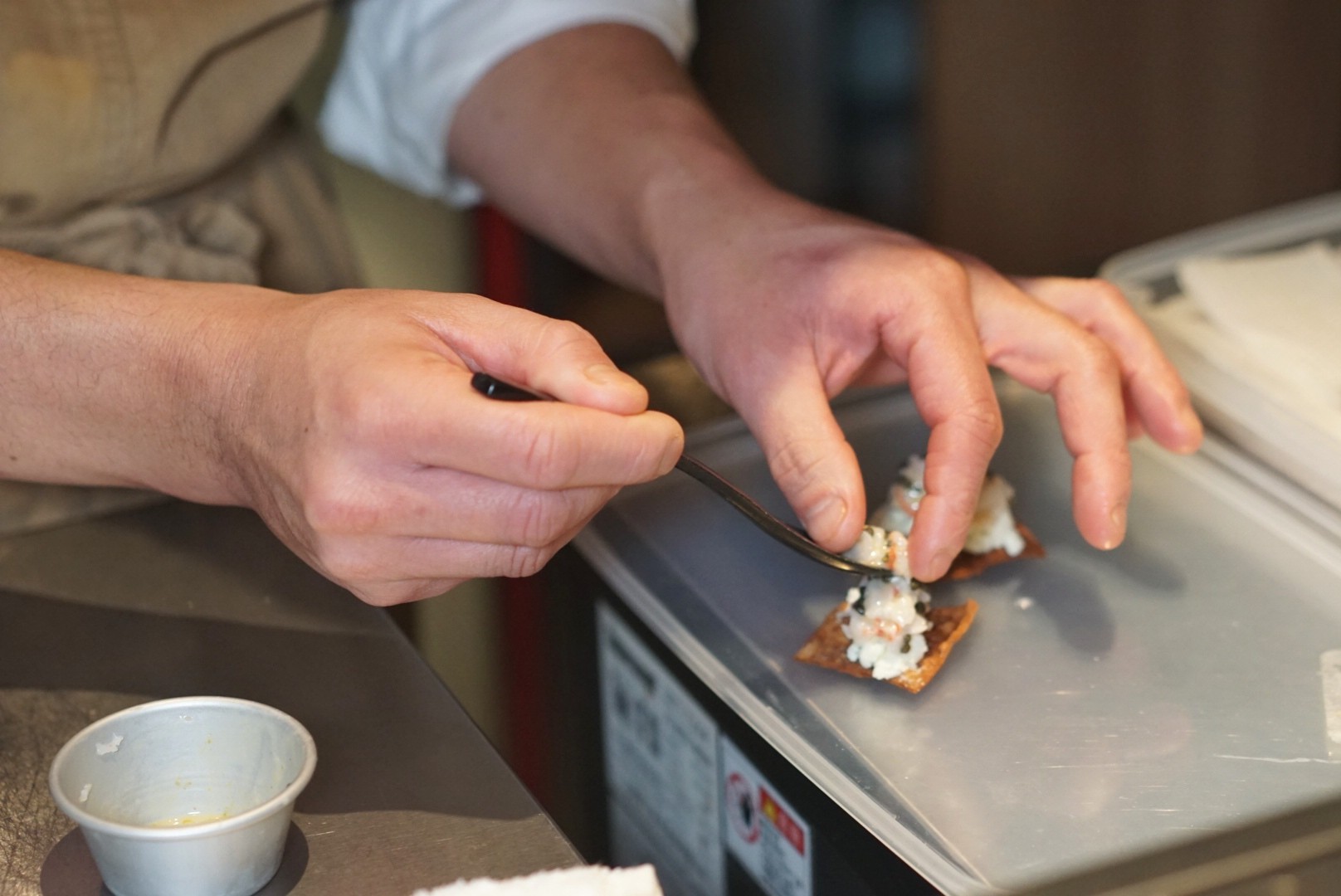
Image by Sophie Steiner/It’s
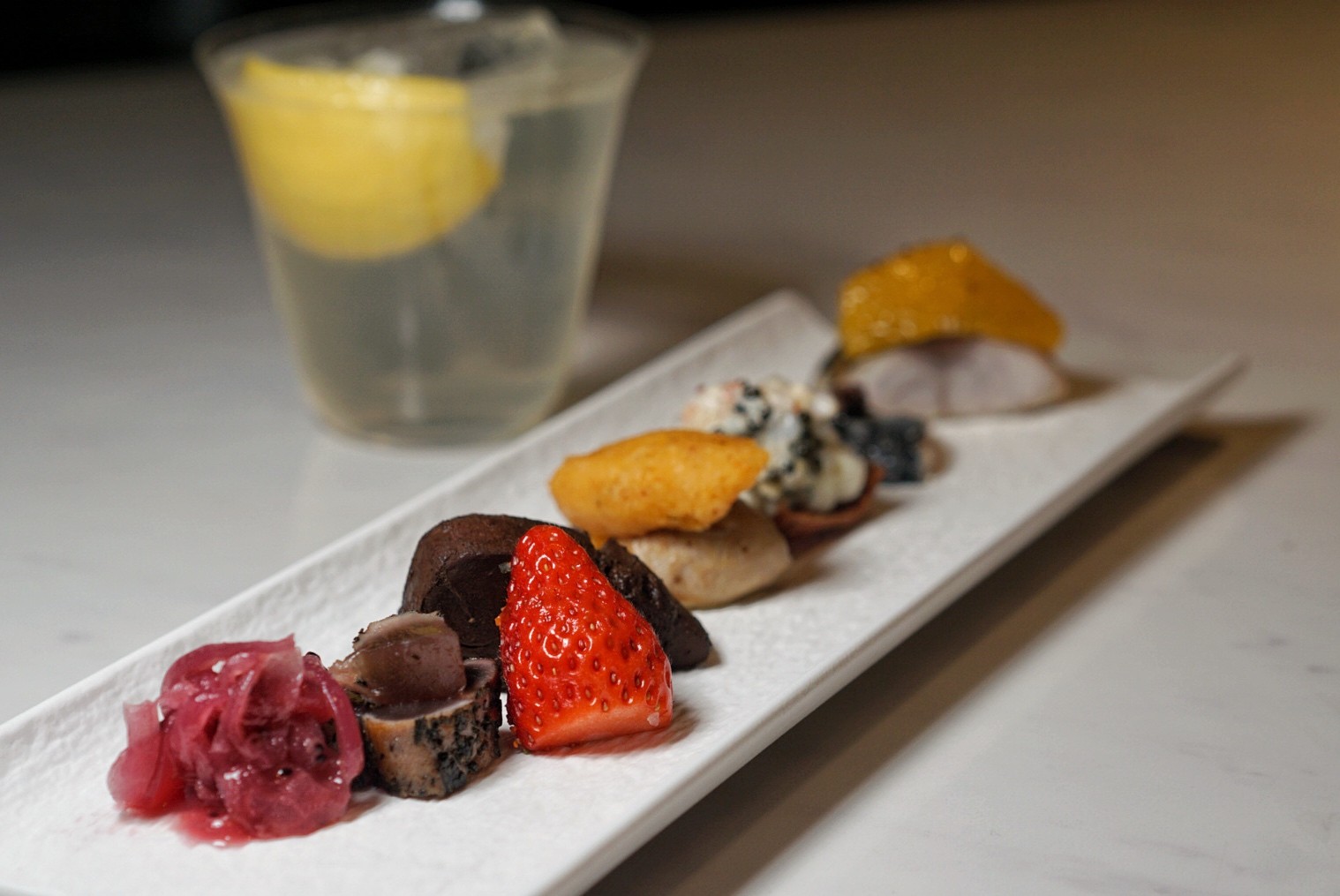
Image by Sophie Steiner/It’s
Ocean piece over afternoon tea, the Afternoon ‘Sea‘ is an array of bites arranged like a tea service, each one an experience in itself.
First there is smoked bonito with sweet and sour purple onion jam, followed by Sawara (Spanish mackerel) cooked in balsamic vinegar, so it comes out like a chocolate cake, accompanied by a strawberry coated in chilli and salt.
A confit Japanese oyster is crowned with a sautéed lemon, panko and butter quenelle, displayed alongside a “deconstructed cannoli” with ricotta, sweet prawns, caviar and shimmering yuzu chips.
Pacific saury, an autumnal swordfish, is candied with dried plum, while seared mackerel belly is served with flambéed orange.
As the sashimi is served with a squeeze of fresh lemon, the Afternoon Sea is accompanied by Real Sour Lemon, a refreshing drink similar to the one found in a neighborhood izakaya in Japan – simply vodka, lemon, soda and salt.
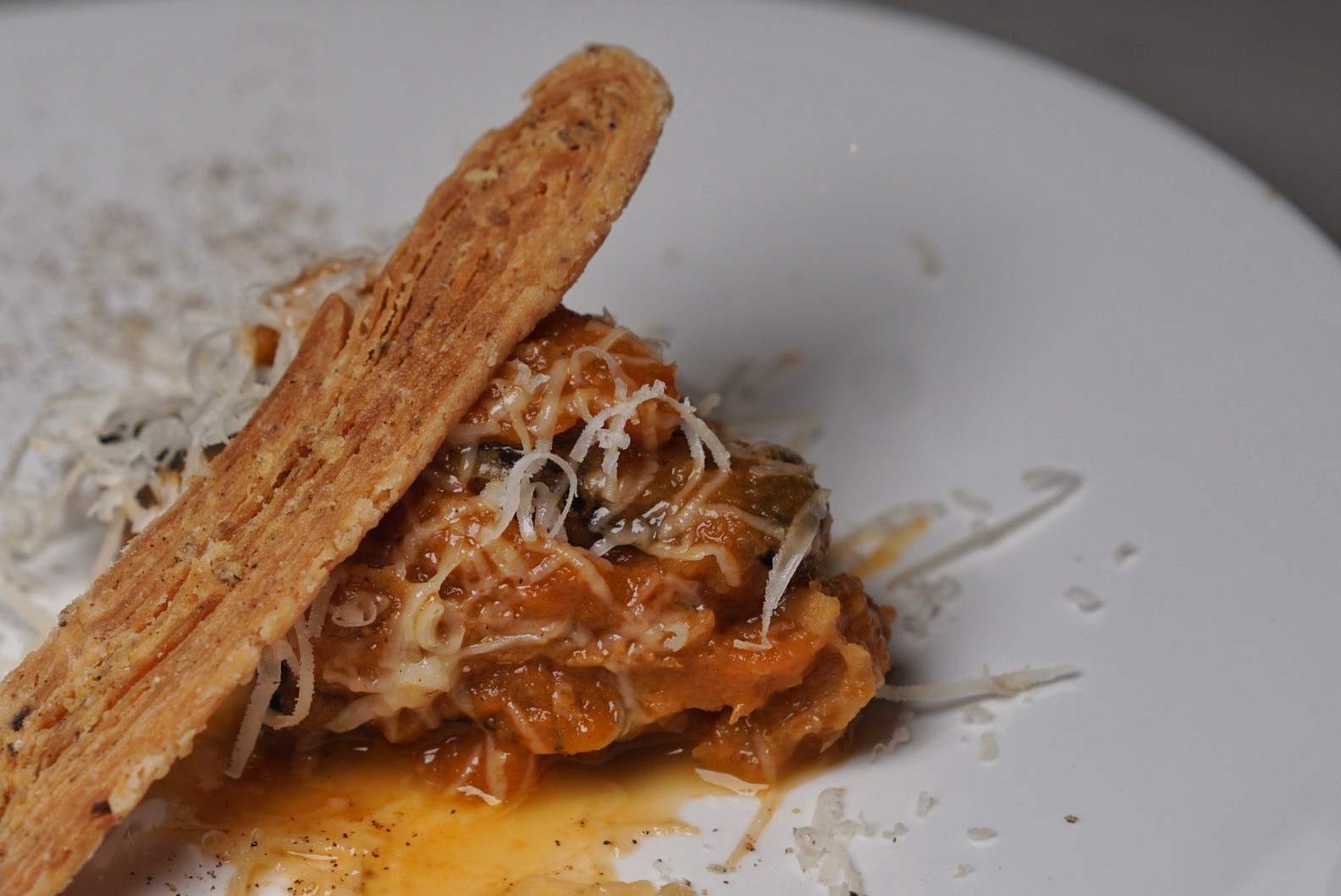 Rosso – trippa and yellow eel in tomato sauce with Carolene Bunny, made with Shaoxing wine, carrot and orange, image by Sophie Steiner/That’s
Rosso – trippa and yellow eel in tomato sauce with Carolene Bunny, made with Shaoxing wine, carrot and orange, image by Sophie Steiner/That’s
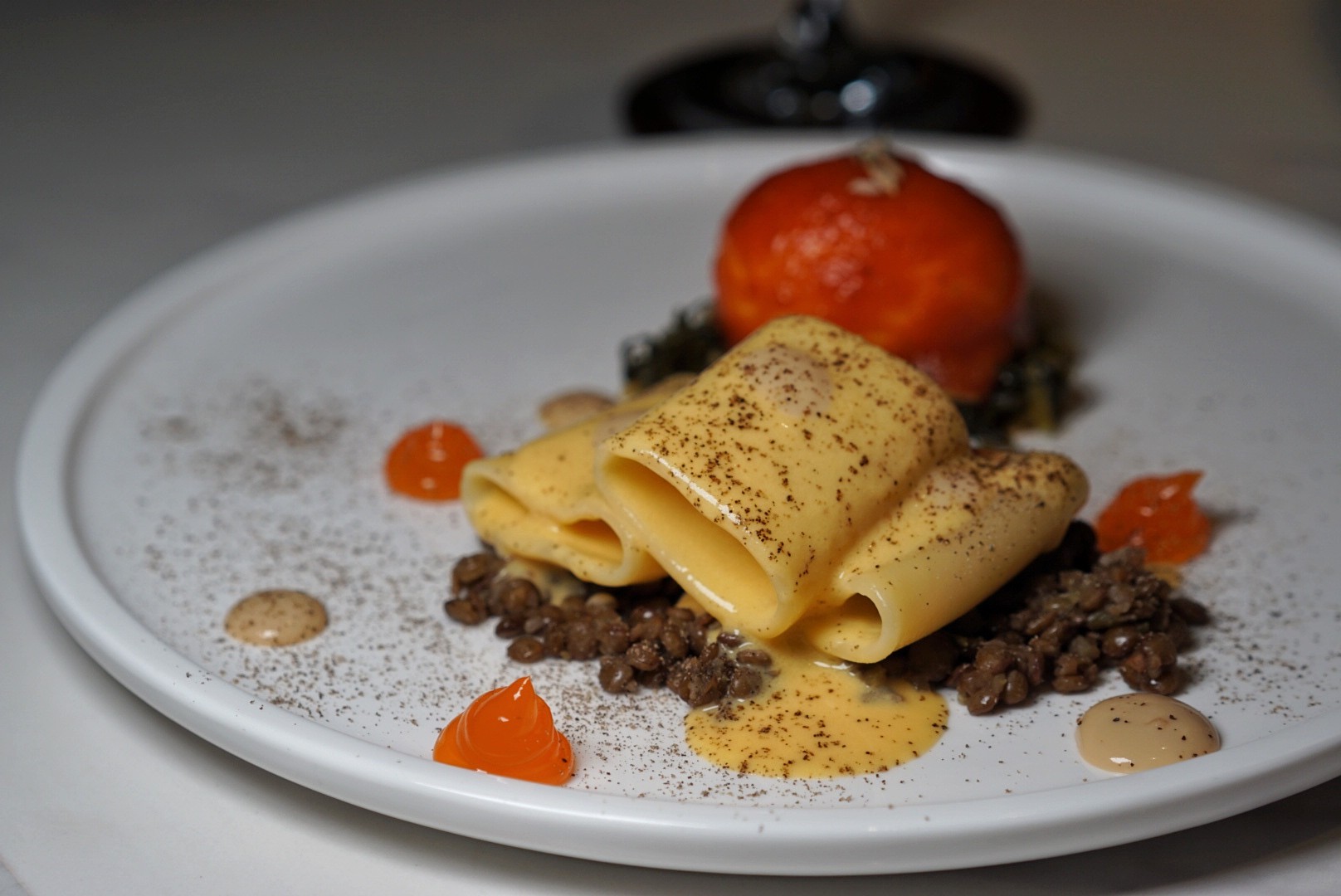
Image by Sophie Steiner/It’s
the Carbonar in Chinese (a spelling “mistake” made on purpose) is Chef Shunojo’s version of Italian carbonara, a dish modestly made with four ingredients – bacon, egg, black pepper and cheese.
The plate arrives with thick wheels of pasta resting on lentils, dressed in a furoo sauce – a Chinese fermented soybean ingredient with a pungent flavor some liken to aged cheese – and a boiled egg drizzled with ketchup perched on top xuecai.
For a more local touch, he uses Hainan black pepper, Shantong egg and Chinese larou (or charcuterie) instead of bacon.
Points of furoo and egg yolk surround the plate, while egg white is used instead in the Carbonara White cocktail, combined with Oloroso sherry, butterscotch and more Hainan black pepper.
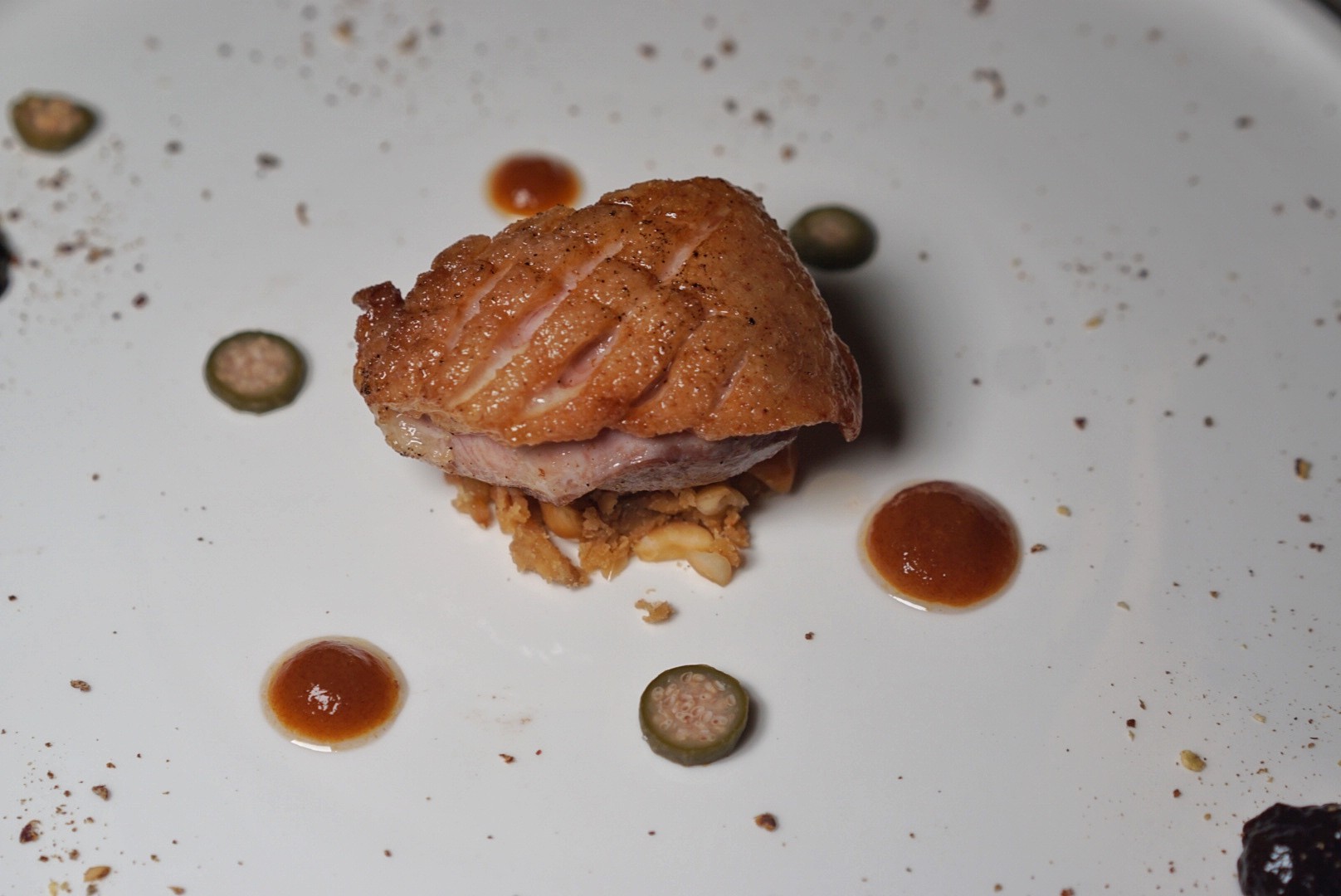
Image by Sophie Steiner/It’s
Served in a wine glass, Dewar’l is a soft libation, purely created to imitate a glass of wine that pairs so well with duck breast as a main course, good duck.
Dewar’s 15 year old is blended with huangjiu, honey, rosemary and orange to make the crispy duck breast shine.
Sprinkled with persimmon sauce, capers and a variety of peppercorns, the duck rests on crushed peanuts – the common thread that connects all the other elements.
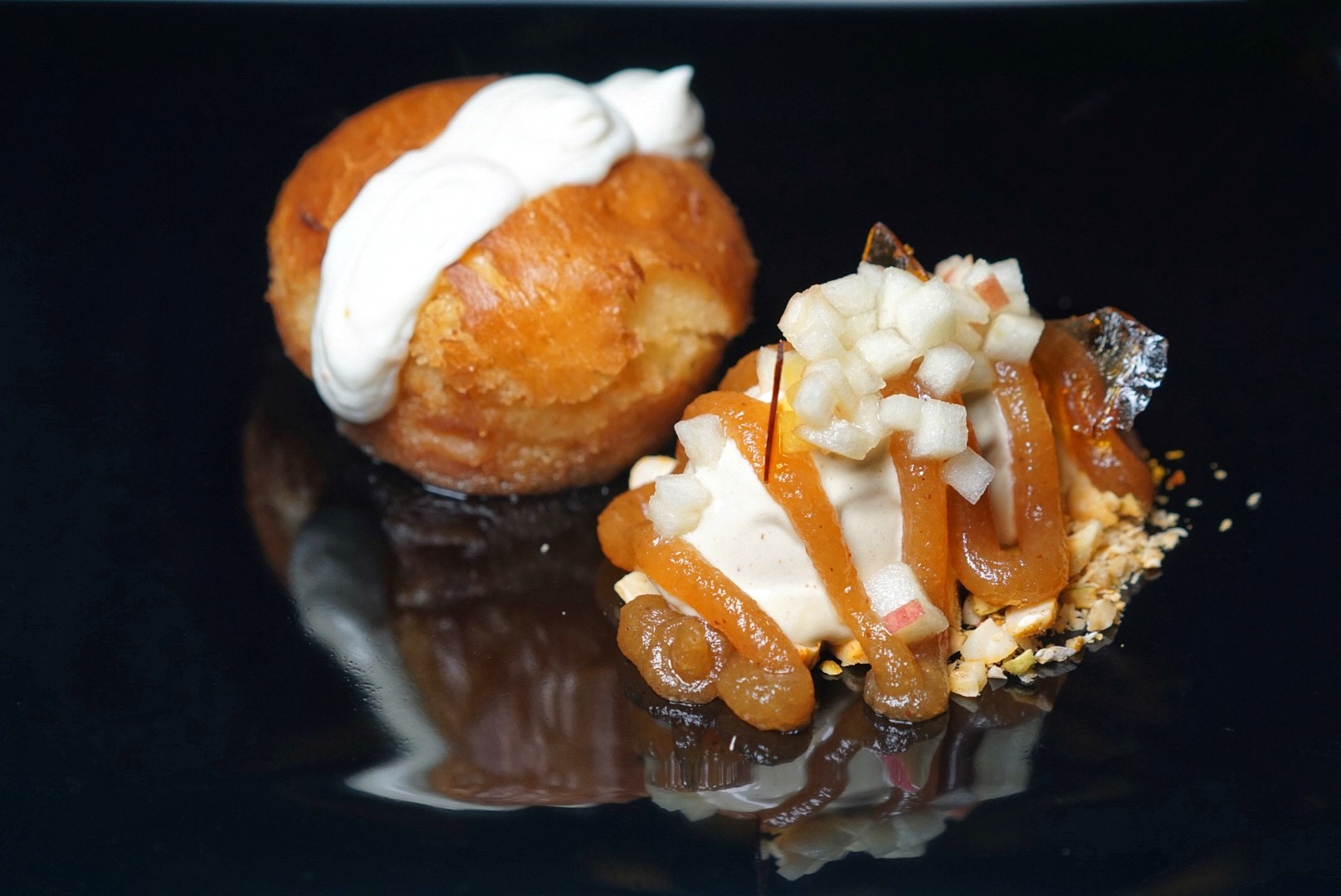
Image by Sophie Steiner/It’s
A scoop of apple pie ice cream, drizzled with apple jelly, diced apples, caramelized sugar flakes and cinnamon, sits alongside kumquat and apple rum baba stuffed with mascarpone cream like The two famous stars.
Accompanied by a cup of rum, ginger, Qimen black tea and agave syrup, the temperature contrast provides a satisfying finish to this more than complete meal.
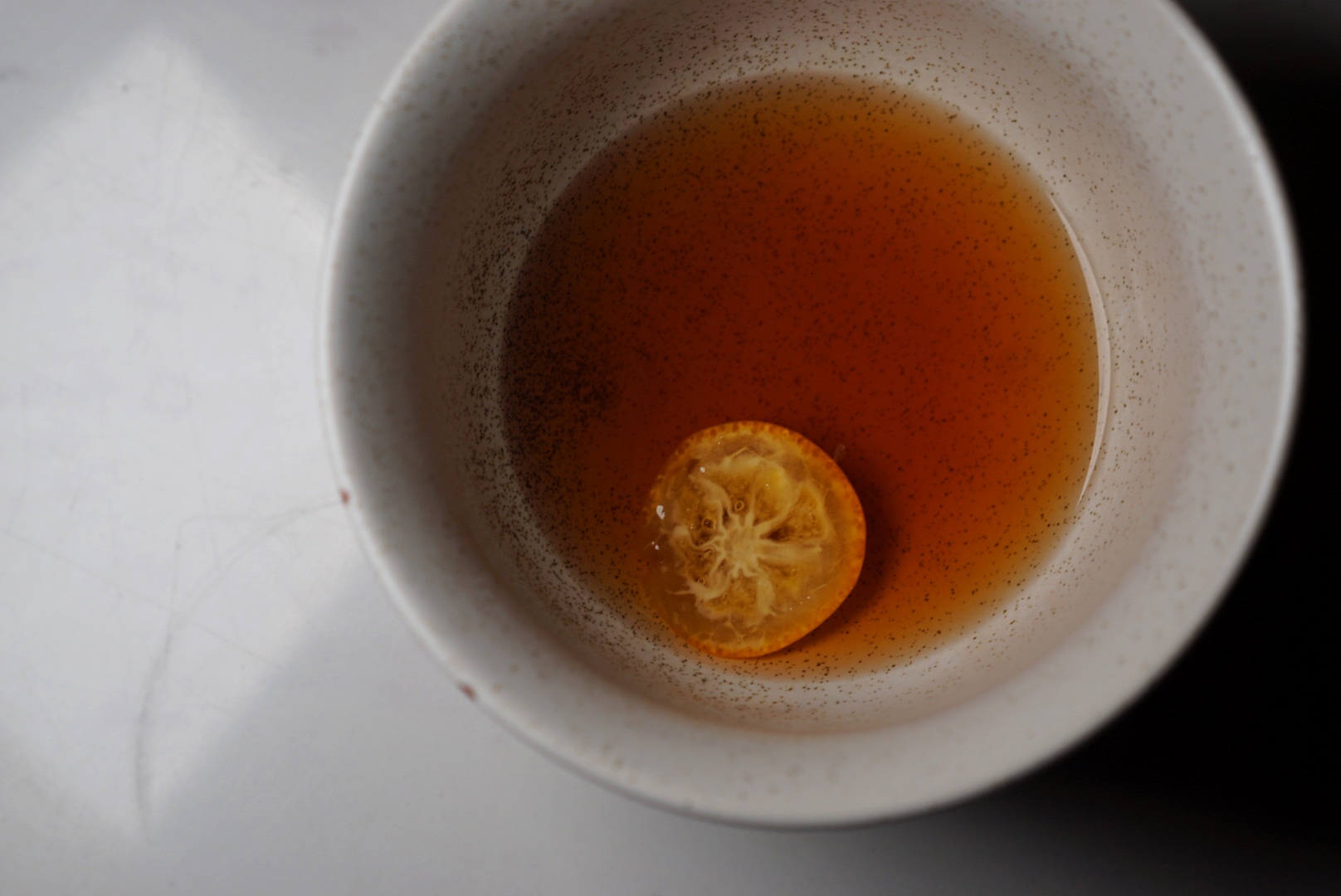
Image by Sophie Steiner/It’s
Our only advice: remember to book because the menu must be prepared in advance.
READ MORE: Kaisha: A taste of Japanese sophistication with a hidden Speakeasy
See a listing for Kaisha. Read more Shanghai Restaurant Reviews.
[Cover Image by Sophie Steiner/That’s]

Comments are closed.